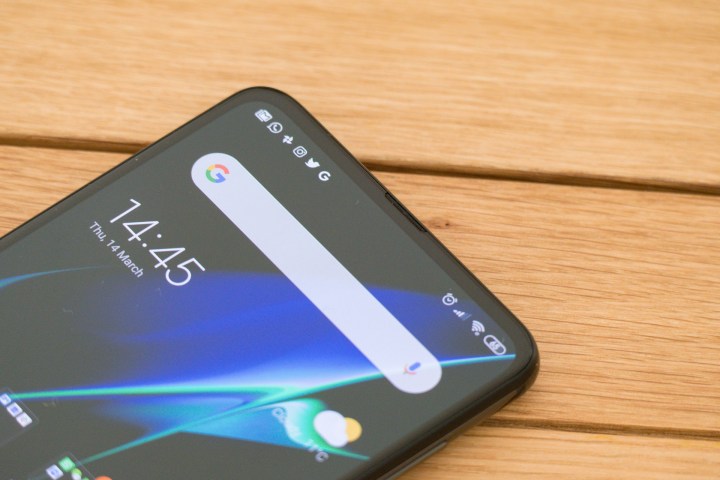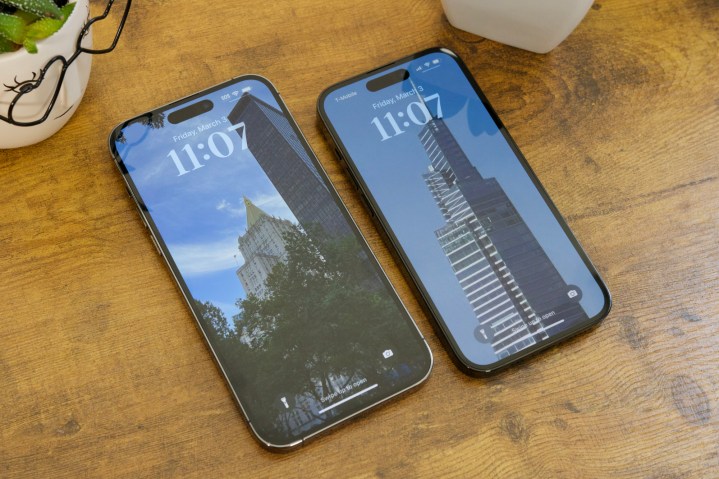
Don’t believe everything you see, but there’s a certain joy in imagining products with a futuristic touch to them. One such fantastical element of the smartphone industry is a truly bezel-free all-screen phone. And as implausible as that sounds, it looks like Apple might be the one to achieve it — and at the biggest scale imaginable.
According to South Korean outlet The Elec, Apple has reportedly asked, “Samsung Display and LG Display to develop an OLED that removes all front bezels from the iPhone.” Apple has been painfully slow at eliminating the bezel on iPhones and continues to sell the iPhone SE (2022), which should ideally exist in an era that is half a decade too persistent.
BREAKING! Apple is working on a 0-bezel iPhone! Looks like Cook is a fan of mine and he hates bezels as much as I do.
According to sources, Apple asked Samsung Display and LG Display to develop OLED screens without bezels at all, completely eliminating bezels and using UPC… pic.twitter.com/mP6QgOeoPw— ICE UNIVERSE (@UniverseIce) July 24, 2023
But as tantalizing as the prospects sound, Apple has been slowly inching toward that design nirvana over the past few years. The Dynamic Island helped Apple get rid of the massive boat-shaped notch in the same time frame as we heard rumors of Apple experimenting with under-screen Touch ID and Face ID.
Simultaneously, the bezels on iPhones also kept getting slimmer. And if rumors are to be believed, the iPhone 15 series will serve the slimmest bezels ever seen on an Apple smartphone. It all appears to be converging towards the ultimate vision of a truly bezel-less all-screen look on a future iPhone.
Android phones did it — and then moved on

When exactly such an iPhone will materialize is anyone’s guess, but it won’t be easy to pull off. There’s plenty of precedent for that. The Vivo Apex from 2020 and the Vivo NEX 3 reached that all-screen look, complete with dramatic curved screen aesthetics.
Xiaomi took a slightly different approach with the Mi MIX 3, using a slide-out camera format to offer an all-screen experience. Samsung focused on reducing the bezels from the sides and embraced the curved glass aesthetics. Oppo wasn’t far behind with its own stunning Find X.

But in a few short years, the mad competitive frenzy of bezel-less phones fizzled out as quickly as it caught everyone’s collective imagination. But it didn’t vanish without leaving behind a trail of practical issues.
With no bezels at play, it becomes a nightmare to grip the phone without accidental touches. For folks that prefer the side-screen back gestures, they know the excruciating drill. Then there’s the pricey side of thin bezels. Simply put, the thinner bezels got, the easier it was for the display to break.
Over the years, the fragility aspect has improved to a certain extent. Corning’s Gorilla Glass protection has improved, while Apple’s own Sapphire Glass has seen its durability go up over the years. Compared to 2018, I would be more confident buying a bezel-free phone in 2023 or later.
A whole bag of practical problems

But fragility is not all there is to tackle. With the functional area of the screen extending edge-to-edge, meeting the metallic frame on all sides, it also becomes a technical challenge to fit crucial components like the antenna and the display digitizer parts.
I’m not sure if anyone would pick a bezel-free beauty that won’t let you make a call due to poor antenna engineering over a device that has some bezels but does its “phone” job well. And if you’re not Steve Jobs, you can’t just say, “You’re holding it wrong” to defend engineering failures and move on without the Wall Street draining your company dry.
Yes, Apple has all the money to pull off a bezel-free iPhone. And from the concept renders we have seen so far, it would look stunning, too. Moreover, with the kind of work that the likes of Samsung and ZTE have done with under-display cameras, I am confident that Apple will deliver the most refined version of a hidden selfie camera, as well.
But at the end of the day, it’s still a phone. And everything still hinges on a big assumption. However, user complaints on official support forums and social media corners don’t lie. iPhones, despite using surgical-grade stainless steel and sapphire glass, still break easily. Unfortunately, the repairs are far from cheap.
High stakes, higher sticker price

There’s a lot at stake here, from fundamental phone tasks to something as advanced as an invisible biometric face-scanning array. There are just too many variables to consider, and given Apple’s approach of “get it right, or kill it altogether,” I am divided on the possibility of a bezel-free all-screen iPhone happening anytime soon — if at all.
Or is it Apple just trying to make a statement? “The thing is, all of these issues melt into insignificance when you hold a near bezel-less phone,” wrote Digital Trends’ Simon Hill all the way back in 2017. “The pursuit of a bezel-less design is the pursuit of beauty.” I agree with those words.
But paying over a thousand dollars for a fragile piece of beautiful hardware won’t be a palatable excuse for millions of Apple fans that save for months to get their hands on an iPhone. For a bezel-less iPhone to succeed, Apple will have to solve tangible engineering problems that Android makers failed to address years ago. It’s hard, but not impossible.



